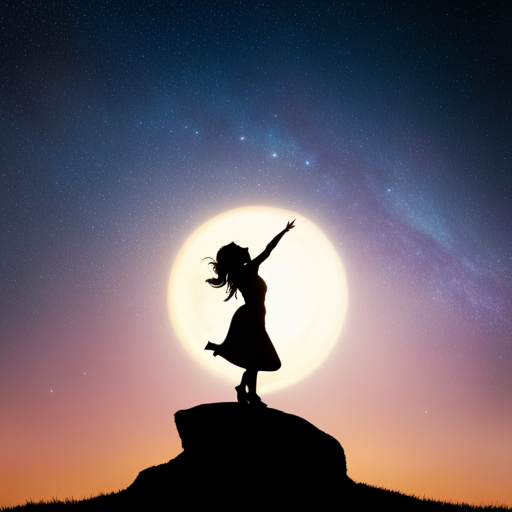Did you know that F. Scott Fitzgerald’s novel, The Great Gatsby, is brimming with symbols that encapsulate various facets of the American Dream? These symbols not only enrich the narrative, but also offer profound insights into the characters and themes.
In fact, there are numerous symbols throughout the novel that serve as powerful metaphors for the pursuit of the American Dream. From the green light at the end of Daisy’s dock to the eyes of Dr. T.J. Eckleburg, each symbol offers a unique perspective on the elusive nature of the American Dream.
By exploring these symbols, we can gain a better understanding of the characters’ desires, ambitions, and ultimately, their disillusionment. So, buckle up and get ready to delve into the world of The Great Gatsby, where symbols abound and the American Dream is both tantalizingly close and frustratingly out of reach.
Key Takeaways
- The green light at the end of Daisy’s dock symbolizes Gatsby’s infatuation with Daisy and his pursuit of wealth and status.
- The eyes of Dr. T.J. Eckleburg on a billboard symbolize the all-seeing eyes of God and the moral decay of the American Dream.
- The Valley of Ashes symbolizes the poverty and despair beneath the surface of the American Dream, highlighting the harsh realities of class inequality and economic disparity in 1920s America.
- Gatsby’s mansion represents the pursuit of wealth and the hollowness that lies within, illustrating the emptiness and disillusionment that can come from pursuing the American Dream.
The Green Light at the End of Daisy’s Dock
As you gaze across the bay, your eyes are drawn to the shimmering green light at the end of Daisy’s dock, beckoning you towards the elusive promise of the American Dream.
This green light represents Gatsby’s infatuation with Daisy and his relentless pursuit of wealth and status. It symbolizes his belief that through hard work and determination, he can achieve everything he desires, including Daisy’s love and acceptance.
The green light also serves as a metaphor for the aspirational aspect of the American Dream, as it represents the hope and optimism that drives individuals to strive for success. Just like the ever-present light at the end of Daisy’s dock, the American Dream seems within reach, yet always remains just out of grasp.
Transitioning to the subsequent section, the eyes of Dr. T.J. Eckleburg provide another symbol that further explores the complexities of the American Dream.
The Eyes of Dr. T.J. Eckleburg
The haunting gaze of Dr. T.J. Eckleburg’s eyes captivates readers, serving as a mesmerizing reminder of the elusive pursuit of prosperity in F. Scott Fitzgerald’s masterpiece. These eyes, depicted on a billboard in the Valley of Ashes, have a symbolic significance that goes beyond their mere presence. They represent the all-seeing eyes of God, observing the corruption and moral decay of the American Dream. The billboard advertisement, which once promoted the services of an eye doctor, now stands as a haunting reminder of the emptiness and moral bankruptcy that can accompany the pursuit of wealth. The eyes of Dr. T.J. Eckleburg peer into the lives of the characters, exposing their superficiality and greed. Through this symbol, Fitzgerald highlights the moral and spiritual emptiness that lies beneath the surface of the American Dream. Moving forward to the next section, the valley of ashes further embodies this bleak reality.
The Valley of Ashes
In the novel The Great Gatsby, the Valley of Ashes symbolizes the poverty and despair that lurk beneath the surface of the American Dream. It serves as a stark reminder that not everyone can attain the wealth and success promised by the American Dream, highlighting the harsh realities of class inequality.
The Valley of Ashes also represents the stark contrast between the opulent lives of the rich and the destitution faced by the poor in 1920s America, emphasizing the vast disparities in society during this time.
Symbolizes the poverty and despair that exist beneath the surface of the American Dream
Beneath the surface of the American Dream, the symbols in The Great Gatsby reveal a haunting world of poverty and despair. The Valley of Ashes, a desolate wasteland between West Egg and New York City, symbolizes the struggles and hardships faced by immigrants in pursuing the American dream. It serves as a reminder of the corrupting influence of wealth and materialism on the pursuit of the American dream. The Valley of Ashes is a stark contrast to the opulence and extravagance of the wealthy in the novel. It represents the stark contrast between the rich and the poor in 1920s America, emphasizing the vast economic inequality of the time. This stark contrast highlights the impossibility of achieving the American dream for those trapped in poverty. Transitioning into the next section, the Valley of Ashes reveals another layer of symbolism in The Great Gatsby.
Represents the stark contrast between the rich and the poor in 1920s America
Experience the haunting contrast between the extravagant wealth of the elite and the desperate poverty of the underprivileged in 1920s America. The symbol of this stark contrast is vividly portrayed throughout ‘The Great Gatsby.’
To fully grasp the extent of this disparity, imagine the following scenes:
-
The opulent mansions of the wealthy, adorned with grand columns and shimmering chandeliers, standing tall amidst vast, manicured gardens.
-
In stark contrast, the dilapidated shanty towns, with their cramped, rundown houses and unpaved streets, where the underprivileged struggle to make ends meet.
-
The luxurious parties hosted by the rich, overflowing with Champagne, laughter, and music, a true embodiment of excess and indulgence.
-
Meanwhile, the destitute masses search for any means of survival, their faces etched with despair and longing for a better life.
This stark contrast serves as a constant reminder of the harsh realities of 1920s America. As we transition into the section about Gatsby’s mansion, the contrast between the rich and the poor becomes even more pronounced.
Gatsby’s Mansion
Step into Gatsby’s opulent mansion and you’ll find yourself immersed in a lavish facade that masks the emptiness lurking within. This grand abode serves as a symbol of the American Dream and the pursuit of wealth that defines the 1920s. Gatsby’s parties, extravagant and filled with the elite, epitomize the excesses of the era. However, behind the glamour and glitter, there lies a profound sense of hollowness. To evoke a poignant response from the audience, imagine a table with two columns and four rows. On one side, list the luxurious amenities and opulent decorations that adorn the mansion. On the other side, reveal the emptiness and loneliness that pervades the lives of the characters who attend Gatsby’s parties. This stark contrast highlights the superficiality of the American Dream and sets the stage for the exploration of the East Egg and West Egg, where the true nature of wealth and success becomes apparent.
The East Egg and West Egg
Nestled on opposite sides of the Long Island Sound, the East Egg and West Egg exude contrasting vibes of old money and new wealth, creating a captivating backdrop for the exploration of social class in The Great Gatsby.
The East Egg represents the established upper class, where inherited wealth and lineage reign supreme. Here, social hierarchies are rigidly upheld, and the residents, like Tom and Daisy Buchanan, flaunt their wealth with a sense of entitlement.
In contrast, the West Egg represents the newly rich, those who have acquired their wealth through entrepreneurial endeavors. Jay Gatsby, with his lavish mansion and extravagant parties, epitomizes this new wealth.
The symbolism of wealth is evident in the juxtaposition of these two eggs, highlighting the stark differences between old money and new money. It sets the stage for the examination of the elusive American Dream and its pursuit.
As we transition into the subsequent section about ‘the color white’, the East and West Egg serve as symbols of the contrasting interpretations of the American Dream.
The Color White
The color white in The Great Gatsby is a significant motif, appearing in descriptions of Daisy’s attire and the lavish parties, conveying a sense of purity and innocence. Interestingly, in the novel, white is mentioned a total of 49 times, emphasizing its importance in highlighting the facade of perfection in the lives of the characters.
White symbolically represents the purity and innocence associated with the American Dream. It serves as a stark contrast to the moral corruption and decay that lurks beneath the surface of the characters’ lives. The color white is a visual representation of the idealized image that individuals strive for in their pursuit of the American Dream. It represents the hope for a better future and the desire to attain an untainted existence.
The significance of white in The Great Gatsby serves to highlight the stark contrast between the illusion of perfection and the harsh reality of the characters’ lives.
Moving on to the subsequent section about ‘the automobile,’ we can delve deeper into the symbols that shape the narrative.
The Automobile
Moving from the symbolic color white to the next prominent symbol in The Great Gatsby, we now turn our attention to the automobile.
In the 1920s, the rise of consumerism and the impact of industrialization brought about a new era of prosperity and materialism. The automobile, with its sleek design and powerful engine, became a symbol of this newfound wealth and status.
In the novel, the characters’ obsession with cars represents their desire to flaunt their wealth and indulge in the excesses of the time. Gatsby’s extravagant car parties and his collection of luxurious automobiles exemplify the pursuit of material possessions as a means to attain the American Dream.
As we delve deeper into the Jazz Age, we will explore how this era influenced the characters’ pursuit of their dreams and the consequences that ensued.
The Jazz Age
The Jazz Age symbolizes the cultural and social changes that took place in the 1920s. It was a time of great transformation and innovation, as people embraced new forms of entertainment, such as jazz music and dance.
The Jazz Age represents a shift towards a more modern and liberated society, where people sought pleasure and entertainment as a distraction from the emptiness of the American Dream.
Symbolizes the cultural and social changes of the 1920s
Symbolizing the cultural and social changes of the 1920s, F. Scott Fitzgerald’s use of imagery in The Great Gatsby vividly portrays the shifting landscape of the American Dream.
The Roaring Twenties brought about significant cultural shifts, as traditional values gave way to a more modern and liberated mindset. Fitzgerald captures this through symbols such as the extravagant parties at Gatsby’s mansion, which represent the newfound freedom and indulgence of the era.
Additionally, the rise of consumer culture is depicted through the lavish displays of wealth and material possessions, symbolizing the societal transformations that occurred during this time.
Moreover, the changing roles of women in society are exemplified by characters like Daisy Buchanan, who embodies the flapper lifestyle and challenges traditional gender norms.
This imagery underscores the idea that the pursuit of pleasure and entertainment served as a distraction from the emptiness of the American Dream, setting the stage for the subsequent section.
Represents the pursuit of pleasure and entertainment as a distraction from the emptiness of the American Dream
Contrary to popular belief, Fitzgerald’s vivid imagery in The Great Gatsby reveals how the pursuit of pleasure and entertainment, reminiscent of the hedonistic excesses of the ancient Roman Empire, ultimately serves as a mere distraction from the hollowness and unattainability of the elusive American Dream in the 1920s.
The characters in the novel, such as Jay Gatsby and the partygoers at his extravagant gatherings, engage in a relentless pursuit of pleasure and indulgence. Yet, beneath the surface of these lavish displays, there lies a profound sense of emptiness and dissatisfaction. The American Dream, with its promise of wealth, success, and happiness, remains elusive and unfulfilled. The pursuit of pleasure becomes a desperate attempt to fill the void, to escape the harsh reality of the unattainable dream. This pursuit, however, only serves as a temporary distraction, leaving individuals yearning for something more substantial.
Transitioning into the subsequent section, the ashen dust of shattered dreams reveals the true cost of this pursuit.
The Ashen Dust
In F. Scott Fitzgerald’s novel, The Great Gatsby, the ashen dust serves as a powerful symbol that delves beneath the surface of the American Dream. It represents the death and decay that lurks beneath the glittering facade of wealth and success.
This symbolizes the harsh reality that the pursuit of the American Dream can lead to the loss of hope and the dire consequences that come with it.
Symbolizes the death and decay that underlies the American Dream
Step into the lavish parties and opulent mansions, and you’ll quickly realize that the American Dream in The Great Gatsby is a glittering facade, hiding the death and decay that lurks beneath. The ashen dust that symbolizes the decay of the American Dream also represents the underlying poverty that exists amidst the wealth and extravagance.
While the parties may seem grand and the mansions may appear magnificent, they are built upon a foundation of corruption and moral decay. The ashen dust serves as a reminder that beneath the surface lies a society crumbling with greed, superficiality, and the pursuit of material wealth. It signifies the loss of hope and the consequences of pursuing the American Dream at any cost.
As we delve deeper into the symbolism of The Great Gatsby, we will explore how this ashen dust represents the loss of hope and the consequences of pursuing the American Dream at any cost.
Represents the loss of hope and the consequences of pursuing the American Dream at any cost
As you delve deeper into the pages of The Great Gatsby, you encounter a striking symbol that embodies the loss of hope and the dire consequences that accompany the relentless pursuit of the American Dream.
This symbol is none other than the infamous green light at the end of Daisy Buchanan’s dock. The green light, shining across the water, becomes Gatsby’s beacon of aspiration, a representation of his relentless pursuit of wealth and social status. However, as the story unfolds, it becomes apparent that this pursuit comes at a great cost.
Gatsby’s single-minded determination to achieve the unattainable dream ultimately leads to his demise, revealing the dark underbelly of the American Dream. The green light serves as a haunting reminder of the tragic consequences that can arise from pursuing the American Dream at any cost.
With this in mind, the story transitions seamlessly into the next symbol, ‘the clock’, which further explores the theme of time and its impact on the pursuit of the American Dream.
The Clock
Symbolizing the relentless passage of time, the clock in The Great Gatsby serves as a haunting reminder of the fleeting nature of the American Dream. Throughout the novel, the clock is a constant presence, ticking away the precious minutes and hours that slip through the characters’ fingers. Its symbolism of time underscores the theme of the transient nature of the American Dream.
Gatsby, for instance, spends years waiting for Daisy to come back to him, clinging to the hope that their love can be resurrected. However, the clock serves as a stark reminder that time waits for no one, and Gatsby’s pursuit of the American Dream ultimately leads to his downfall.
The clock also represents the symbolism of waiting, as the characters in the novel are constantly waiting for something or someone that may never come. In this way, the clock highlights the consequences of pursuing the American Dream at any cost, as it reveals the emptiness and disillusionment that can come from chasing an unattainable dream.
Frequently Asked Questions
What is the significance of the color green in the novel?
The color green in The Great Gatsby symbolizes wealth and materialism. It represents the desire for money and success that’s deeply ingrained in the characters’ pursuit of the American Dream.
The association between green and wealth is evident in Gatsby’s lavish parties, his opulent mansion, and the green light at the end of Daisy’s dock. Fitzgerald uses this symbolism to critique the emptiness and corruption that can accompany the pursuit of wealth.
How does Gatsby’s mansion symbolize the American Dream?
Gatsby’s mansion, a majestic spectacle of wealth, embodies the essence of the American Dream. Its grandeur, with its sprawling gardens and opulent rooms, is a visual representation of Gatsby’s success and ambition. The parties held in the mansion, extravagant and extravagant, symbolize the allure of the American Dream, where anyone can attain prosperity and social status.
The mansion becomes a symbol of hope and possibility, showcasing the desire for wealth and the pursuit of the American Dream.
What role do the eyes of Dr. T.J. Eckleburg play in the portrayal of the American Dream?
The eyes of Dr. T.J. Eckleburg in ‘The Great Gatsby’ play a pivotal role in the portrayal of the American Dream. These eyes, looming over the desolate Valley of Ashes, symbolize the all-seeing and unattainable nature of the dream. They represent a moral and spiritual decay, as well as the loss of innocence in the pursuit of wealth and success.
Additionally, the color green, often associated with the American Dream, is present in the eyes, further emphasizing their significance in the narrative.
How does the Valley of Ashes represent the corruption of the American Dream?
The Valley of Ashes in The Great Gatsby symbolizes the corruption of the American Dream. It serves as a stark contrast to the lavishness of the wealthy East Egg and West Egg.
The valley represents the decay and moral bankruptcy of society, where dreams are shattered and hopes are dashed. The ashen landscape reflects the disillusionment and despair that result from the pursuit of wealth and success at any cost.
It signifies the dark underbelly of the American Dream, highlighting the consequences of its corruption.
What does the use of automobiles symbolize in relation to the American Dream in The Great Gatsby?
In the world of The Great Gatsby, the roar of the automobiles serves as a symbol of the American Dream. These sleek and powerful machines embody the pursuit of wealth and status, reflecting the obsession with material success.
As they race through the streets, the cars become a portrayal of social status, with the wealthy using them to display their power and influence. The symbolism of wealth and the portrayal of social status are intertwined within the glimmering chrome and roaring engines, showcasing the allure and corruption of the American Dream.
Conclusion
In conclusion, F. Scott Fitzgerald masterfully utilizes a multitude of symbols in The Great Gatsby to represent the American Dream.
From the captivating green light at the end of Daisy’s dock, to the haunting eyes of Dr. T.J. Eckleburg, each symbol contributes to the insightful commentary on the pursuit of wealth and happiness.
The Valley of Ashes portrays the harsh reality of social inequality, while Gatsby’s opulent mansion symbolizes the illusion of success.
The East Egg and West Egg represent the divide between old and new money, while the automobile and Jazz Age epitomize the changing times.
Lastly, the ashen dust and ticking clock serve as reminders of the fleeting nature of the American Dream.
Through these symbols, Fitzgerald reveals the dark underbelly of the American Dream, offering a profound analysis of society and its relentless pursuit of success.










